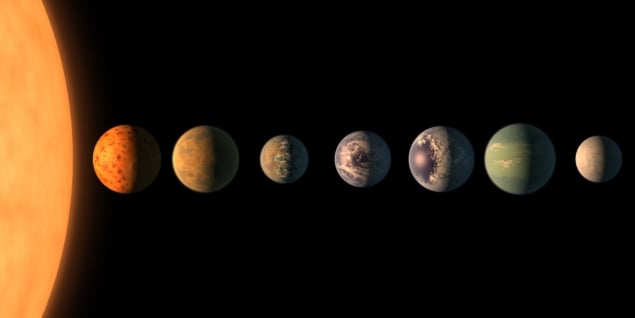A Limited Habitable Zone for Complex Life
Edward W. Schwieterman1,2,3,4,5, Christopher T. Reinhard3,4,6, Stephanie L. Olson3,7, Chester E. Harman4,8,9, and Timothy W. Lyons1,3,4
Published 2019 June 10 • © 2019. The American Astronomical Society.
The Astrophysical Journal, Volume 878, Number 1

No safe zone: do high carbon monoxide levels preclude the existence of life in the Trappist-1 system? (Courtesy: NASA/JPL-Caltech) Source/Fonte
Abstract
The habitable zone (HZ) is commonly defined as the range of distances from a host star within which liquid water, a key requirement for life, may exist on a planet's surface. Substantially more CO2 than present in Earth's modern atmosphere is required to maintain clement temperatures for most of the HZ, with several bars required at the outer edge. However, most complex aerobic life on Earth is limited by CO2 concentrations of just fractions of a bar. At the same time, most exoplanets in the traditional HZ reside in proximity to M dwarfs, which are more numerous than Sun-like G dwarfs but are predicted to promote greater abundances of gases that can be toxic in the atmospheres of orbiting planets, such as carbon monoxide (CO). Here we show that the HZ for complex aerobic life is likely limited relative to that for microbial life. We use a 1D radiative-convective climate and photochemical models to circumscribe a Habitable Zone for Complex Life (HZCL) based on known toxicity limits for a range of organisms as a proof of concept. We find that for CO2 tolerances of 0.01, 0.1, and 1 bar, the HZCL is only 21%, 32%, and 50% as wide as the conventional HZ for a Sun-like star, and that CO concentrations may limit some complex life throughout the entire HZ of the coolest M dwarfs. These results cast new light on the likely distribution of complex life in the universe and have important ramifications for the search for exoplanet biosignatures and technosignatures.
FREE PDF GRATIS: The Astrophysical Journal







